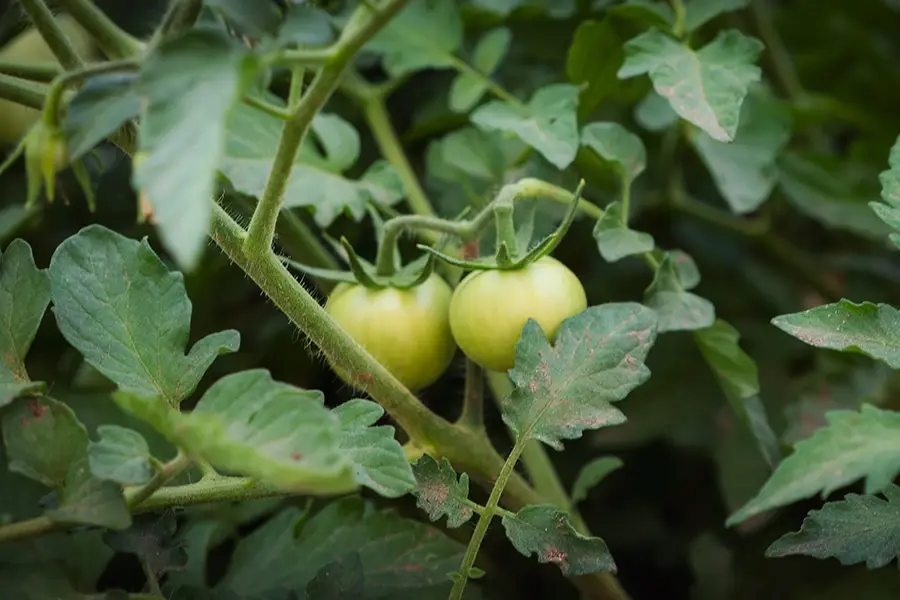Solanum lycopersicum – Tomato
- Hakan Sener
- Jul 20
- 2 min read
Updated: Aug 3
Explore Solanum lycopersicum (Tomato) – its characteristics, habitat, cultivation, propagation, and functional uses and benefits.

Solanum lycopersicum | Botanical Characteristics
Common Names: Tomato
Family: Solanaceae
Appearance: A sprawling, vining plant with soft, hairy stems and compound leaves. Produces clusters of small yellow flowers followed by fleshy, often red berries (the tomato fruits), though they may also be orange, yellow, pink, purple, or green depending on the variety.
Type: Annual or short-lived perennial (grown as annual in temperate climates)
Evergreen / Deciduous: Deciduous (frost-sensitive)
Layer: Herbaceous / Vine
Root System: Fibrous root system with strong lateral development; develops adventitious roots from stem when in contact with soil
Height: 0.3–2.5 meters depending on variety and support
Width: Sprawling or climbing habit depending on pruning
Lifespan: Annual in most climates; perennial in frost-free zones
Growth Rate: Fast
Fertility: Self-fertile
Flowers: Hermaphroditic
Pollinator: Primarily wind- and self-pollinated; bees (especially bumblebees) can assist via buzz pollination
Toxicity: Leaves and unripe fruit contain solanine; can be toxic if consumed in large amounts
Solanum lycopersicum | Habitat and Cultivation
Range
Native Range: Western South America
Companionship: Compatible with basil, marigold, onion, carrot, lettuce, garlic; avoid planting near potatoes and fennel
Invasive Range: Not considered invasive
USDA Hardiness Zone: Grown annually in zones 2–10; perennial in zones 10–12
Minimum Chill Hours Required: None
Resistance/Tolerance
Poor Soil: Low tolerance (prefers fertile conditions)
Drought: Low to moderate tolerance (requires regular watering)
Shade: Low tolerance (requires full sun)
Flood: Low tolerance
Wind: Moderate tolerance (requires staking or support in exposed areas)
Maritime: Moderate tolerance
Air Pollution: Moderate tolerance
Fire: Not fire-adapted
Thriving Conditions
Sun Exposure: Full sun (at least 6–8 hours of direct sunlight daily)
Soil Moisture: Consistently moist, not waterlogged
Soil Type: Well-drained, loamy, fertile soil
Soil PH: Slightly acidic to neutral (6.0–7.0)
Propagation
Seeds: Common and reliable; sow indoors in cooler climates and transplant after frost
Cuttings: Possible with soft stem cuttings placed in moist soil
Solanum lycopersicum | Functional Uses and Benefits
Edible: Fruit widely consumed raw or cooked; leaves not edible due to solanine content
Medicinal: Lycopene-rich fruits have antioxidant properties; studied for cardiovascular and skin health benefits
Cosmetics: Lycopene occasionally used in skincare for antioxidant purposes
Animal Feed: Overripe or damaged fruits can be fed to livestock in small quantities
Fiber: Not used for fiber
Timber: Not applicable
Firewood: Not applicable
Wind Break: Not suitable
Fence: Not suitable
Cover Crop: Not typically used as cover crop
Mulch: Not used as mulch
Nitrogen Fixer: No
Dynamic Accumulator: No significant data available
Pollinator Attractor: Yes, attracts bees, especially for buzz pollination
Pest Repellent: No
Wildlife Supporter: Offers fruit for birds and small mammals; flowers support native pollinators
Sign up for our newsletter or connect with us on social media to stay up-to-date with our latest posts and permaculture inspiration.
Explore our inspiring series and posts:
Love the post? Share it with your circle, inspire your people: